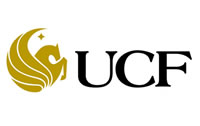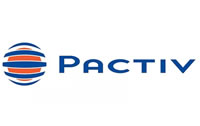Making a positive change requires both identifying opportunities for improvement and getting those improvements implemented. A lesson from history may help to illustrate the point.
In the 1840s, the Vienna General Hospital’s Allgemeines Krankenhaus der Stadt Wien teaching hospital was among the top hospitals in Europe, or the world. It operated two maternity clinics. One clinic was staffed by physicians and medical students, and the second clinic was staffed by midwives and midwives in training. During that period many mothers and infants were succumbing to puerperal, or childbed, fever. In the clinic staffed by physicians and medical students, there were between 12% and 18% infection rates. Oddly, the midwife clinic had a much lower rate of infection: approximately 2%.
In 1847 a physician named Ignaz Semmelweis was given a two-year appointment as an assistant in obstetrics, much like the duration of many manager assignments. While there, Semmelweis observed the mortality rate difference between the clinics. After some analysis, he determined that the physicians and medical students performed autopsies and other procedures intermixed with childbirth procedures; midwives only participated in childbirth.
Semmelweis believed the root of the problem involved substances from the cadavers being transferred to the maternity patients. He instituted a policy that physicians and medical students were to wash their hands with a chlorinated lime solution before examining any patient, especially after autopsies. There was a reduction in puerperal fever from 12.24% to 2.38% in the physician-staffed clinic. He then directed that all medical utensils were also to be washed with the chlorinated lime solution. The puerperal fever for both clinics fell to about 1%.
His superiors and colleagues were not impressed for two reasons. First, the prevailing thought was that some bad element within the air inside the maternity rooms was the real problem. The doctors believed that a new ventilation system was the real reason for the drop in infection.
The second reason was that Semmelweis was abrasive; people didn’t like him. Semmelweis was viewed as an agitator, a malcontent, someone who was difficult to work with. At the end of his two-year appointment, the hospital offended Semmelweis by offering him a clinical position, without permission to teach with cadavers, a fundamental teaching method. He turned it down and moved to Budapest, where in 1851 he was made head of obstetrics at St. Rochus Hospital. He again instituted his antiseptic protocol and mirrored the same results.
Most physicians continued to resist washing hands before treating patients. Physicians were viewed as divinely blessed; most believed they could not be the cause the problem. Also, the prescribed solution would require expensive remodeling to plumb running water and to install sinks in patient areas.
In 1855 Semmelweis left St. Rochus Hospital and took a faculty position at Pest University. In 1861 Semmelweis published a book on antiseptic practices. His book was criticized as poorly written, and he received a great deal of ridicule and condemnation by the “establishment” professionals. Within about five years, and as a result of the widespread criticism, Semmelweis became depressed, forgetful, and eventually landed in an asylum, where he died within weeks at 47 years of age.
Two decades after his death, his work was revisited, and he was given credit after Louis Pasteur and others produced more evidence on the benefits of antiseptic techniques and the value of hand washing.
There are several lessons from this story. First, data can lead you to the right conclusions; observing the correlation between outcomes and practices was the key. Second, whether you’re dealing with physicians, experienced line employees, or anyone else, culture or prevailing wisdom dies hard. If you want to get traction with an idea you need to have a fact-based position coupled with interpersonal skills. You must connect with people in a way that gets them to work with you, not against you. Third, it took 14 years for Semmelweis to publish his thoughts; if you don’t communicate clearly and in a timely manner, it is difficult to generate the momentum needed to overcome resistance to change. Thousands of lives could have been saved if establishment physicians would have had an open mind on the subject.
For the establishment people out there, it’s easy to believe the problem isn’t you. After all, you’ve been divinely ordained to manage inventory, plan jobs, or work on pumps or motors. You can’t possibly be the cause of the problem, right? Check yourself. Are you resisting instinctively, or have you sought to understand before condemning?
Tom Moriarty, P.E., CMRP is president of Alidade MER. He is a former Coast Guardsman, having served for 24 years; an enlisted Machinery Technician for nine years; earned a commission through Officer Candidate School. A past Chair of the American Society of Mechanical Engineers (ASME), Canaveral Florida Section, and a member of the ASME Plant Engineering and Maintenance (PEM) Division. He has a B.S. in Mechanical Engineering from Western New England College, and an MBA from Florida Institute of Technology; Professional Engineer (PE) licensed in Florida, Certified Maintenance and Reliability Professional, various credentials in management and reliability fields. He can be reached at [email protected], or (321) 773-3356.


















